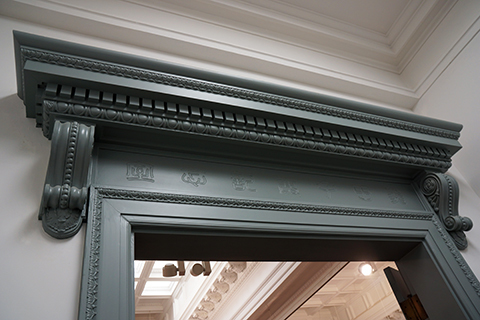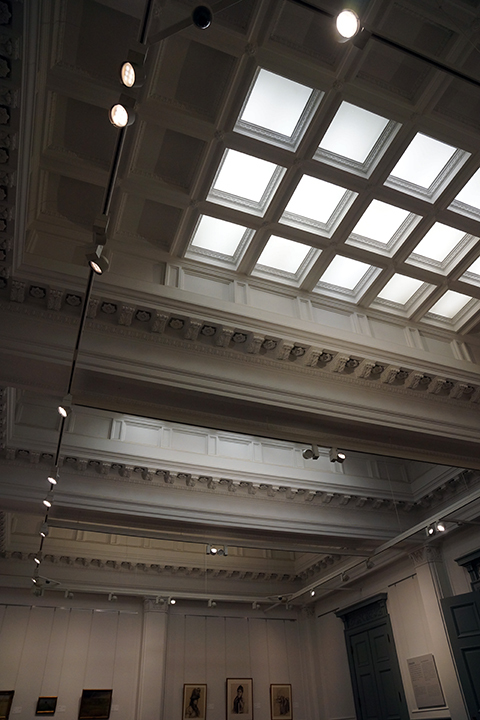

An easel, a chair and a paint box used by Kuroda

Sophisticated ornaments are arranged on the skylight windows of the memorial room.
New art movements, including the Impressionism developed by Édouard Manet (1832-1883), Claude Monet (1840-1926), Edgar Degas (1834-1917) and others, appeared at that time in France, and Paris was the center of those movements. On the other hand, Japanese art drew increasing attention, which was called Japonism. It is easy to imagine that those situations stimulated Kuroda who just began to study law. Kuroda attended an evening art school and studied under Raphael Collin while studying law, and finally decided to devote himself to study painting in 1889, the year when the Constitution of the Empire of Japan was proclaimed. Given France's rise as a cultural nation, Kuroda foresaw an ideal state of Japan as a modern nation.
Collin's expression of women in the outdoors filled with bright natural light and of naked bodies were different from that of erotic ukiyo-e which was disparaged at that time in Japan. Kuroda was shocked that beauty of naked bodies was expressed, and determined to try expressing the beauty.
Collin's expression of women in the outdoors filled with bright natural light and of naked bodies were different from that of erotic ukiyo-e which was disparaged at that time in Japan. Kuroda was shocked that beauty of naked bodies was expressed, and determined to try expressing the beauty.

A splendid ornament is seen above the door of the memorial room.






















